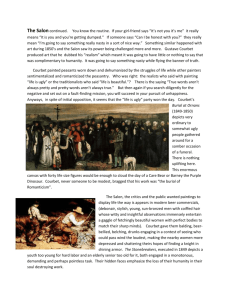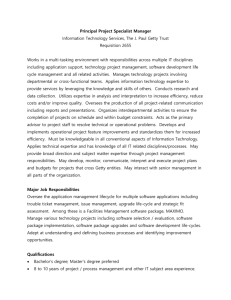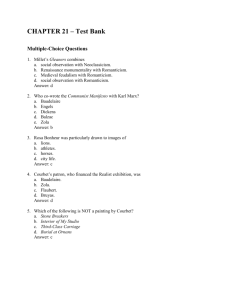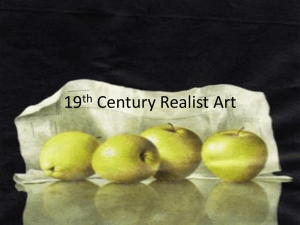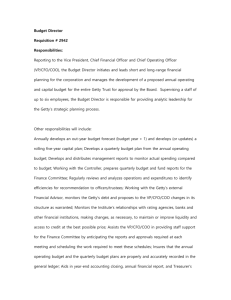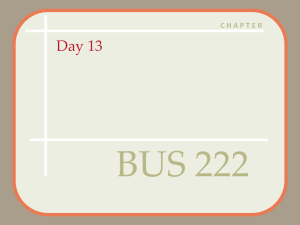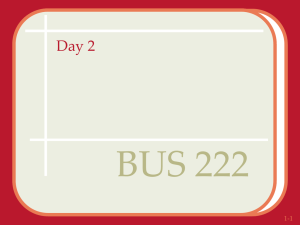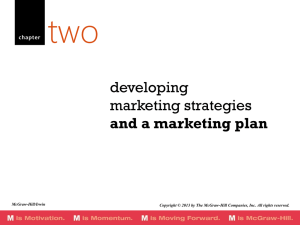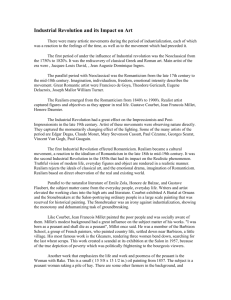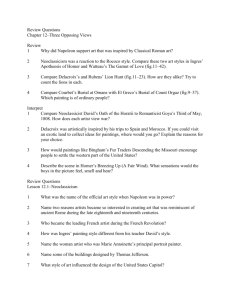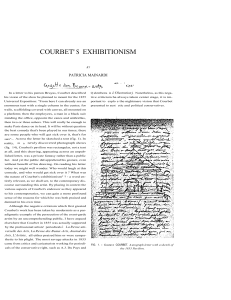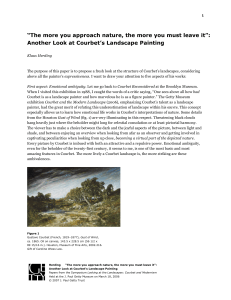Courbet's sensational 1855 exhibition enhanced a
advertisement
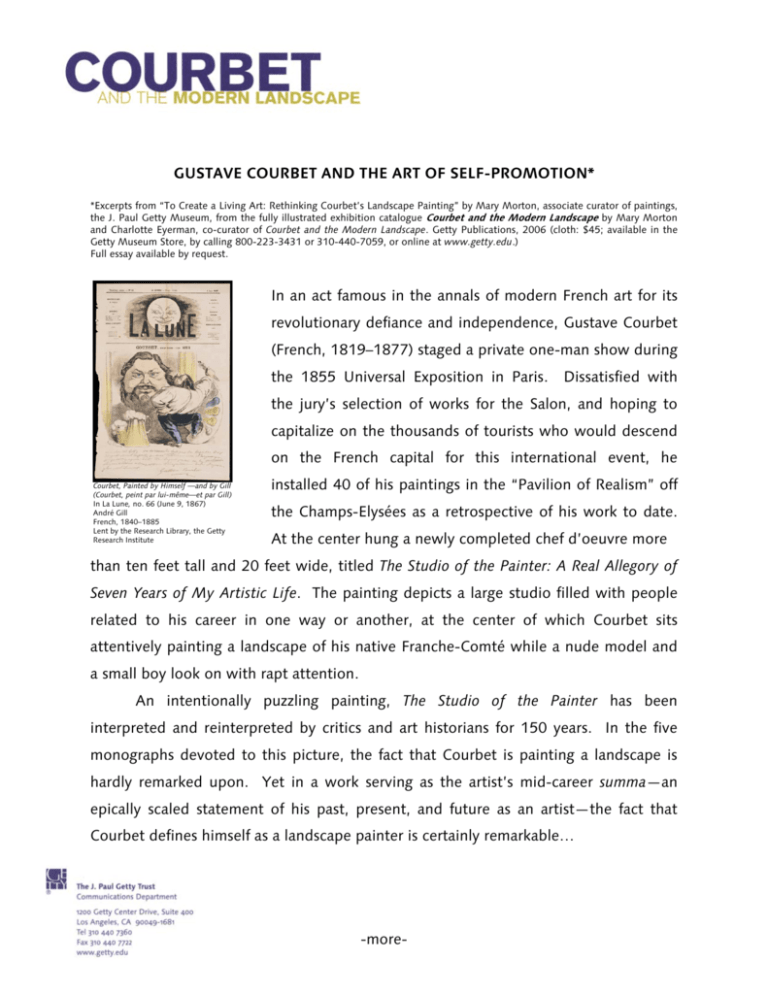
GUSTAVE COURBET AND THE ART OF SELF-PROMOTION* *Excerpts from “To Create a Living Art: Rethinking Courbet’s Landscape Painting” by Mary Morton, associate curator of paintings, the J. Paul Getty Museum, from the fully illustrated exhibition catalogue Courbet and the Modern Landscape by Mary Morton and Charlotte Eyerman, co-curator of Courbet and the Modern Landscape. Getty Publications, 2006 (cloth: $45; available in the Getty Museum Store, by calling 800-223-3431 or 310-440-7059, or online at www.getty.edu.) Full essay available by request. In an act famous in the annals of modern French art for its revolutionary defiance and independence, Gustave Courbet (French, 1819–1877) staged a private one-man show during the 1855 Universal Exposition in Paris. Dissatisfied with the jury’s selection of works for the Salon, and hoping to capitalize on the thousands of tourists who would descend on the French capital for this international event, he Courbet, Painted by Himself —and by Gill (Courbet, peint par lui-même—et par Gill) In La Lune, no. 66 (June 9, 1867) André Gill French, 1840–1885 Lent by the Research Library, the Getty Research Institute installed 40 of his paintings in the “Pavilion of Realism” off the Champs-Elysées as a retrospective of his work to date. At the center hung a newly completed chef d’oeuvre more than ten feet tall and 20 feet wide, titled The Studio of the Painter: A Real Allegory of Seven Years of My Artistic Life. The painting depicts a large studio filled with people related to his career in one way or another, at the center of which Courbet sits attentively painting a landscape of his native Franche-Comté while a nude model and a small boy look on with rapt attention. An intentionally puzzling painting, The Studio of the Painter has been interpreted and reinterpreted by critics and art historians for 150 years. In the five monographs devoted to this picture, the fact that Courbet is painting a landscape is hardly remarked upon. Yet in a work serving as the artist’s mid-career summa—an epically scaled statement of his past, present, and future as an artist—the fact that Courbet defines himself as a landscape painter is certainly remarkable… -more- Page 2 Courbet’s sensational 1855 exhibition enhanced a celebrity status the artist had been cultivating for over a decade. On arriving in Paris as a highly ambitious young art student in 1839, Courbet decided that in order to succeed as a painter he needed to make a big splash quickly, and he began to master the art of self-promotion. Foremost in Courbet’s self constructed mythology was his identity as a native son of the Franche-Comté, or “Free Country,” a geologically dramatic province in eastern France near the Swiss border with a history of political independence from Pariscentralized France. In counterpoint to the urban sophistication of the modern Parisian, Courbet presented himself as a mountain man, physically robust, dynamic, and above all, independent. He exaggerated his provincial accent and behavioral traits and fashioned himself into a somewhat brutish naïf, a bohemian, and a populist. “Shout loud and walk straight” was his mantra, inherited by his own account from his free-thinking Franc-Comtois grandfather, a “1793 Republican.” The Majority of Courbet’s early paintings related to the Franche-Comté, including his first Salon success in 1849, After Dinner at Ornans. At the same Salon, Courbet submitted seven landscapes under titles referencing specific sites near Ornans, the town where he was raised. Also known as “jura” for the region’s mountain range (the term “Jurassic” is derived from its ancient rocky cliffs), the Franche-Comté is marked by spectacular topography. As a young man Courbet hiked, fished, and hunted in the valley around Ornans, and he spoke passionately about the rugged beauty of the landscape. Picturing his native land was both natural for Courbet and strategically useful in the construction of his un-Parisian persona. Alongside his figural works, Courbet consistently submitted landscapes of the Franche-Comté to the Salon. One picture accepted in the Salon section of the 1855 Universal Exposition was The Stream, a large painting of a picturesque bend in the river Brême just outside Ornans… The Stream was Courbet’s first public success as a landscape painter. He discovered a responsive market for landscapes and acknowledged as a strategy the connection between the public provocation of his large figural works and the increased saleability of his landscapes. -more- As the publication of Courbet’s Page 3 correspondence and the scholarship it has inspired have shown, Courbet was a savvy careerist in a rapidly developing art market. He aggressively courted critics, inviting writers and editors of journals to see his work in his studio, at the Salon, and in his private exhibitions. He promoted himself constantly both in the press and in his paintings (between 1844 and 1855, he submitted a series of theatricalizing self portraits to the Salon, making his face as well known as his name). He certainly understood the benefits of bad press: “When I am no longer controversial, I will no longer be important,” he proclaimed in 1852. Courbet’s brazen manipulation of the rising art market and its system of dealers and critics was a central feature of his progressive approach, a hallmark of Modernism. Though some scholars have blamed Courbet’s complicity with the market for what they consider to be a decline in his work in the 1860s, Courbet himself credited the market for liberating him from the necessity of pandering to official arbiters of artistic taste (the government, the French Academy, the École des Beaux-Arts). Courbet saw the market as a more direct channel of address to more people than official commissions and exhibitions. And because the market encouraged certain aspects of Courbet’s painterly production, the effect of influence moved in both directions. Indeed, Courbet saw his commercial success as confirmation of his view of himself as a “man of his time.” … ### MEDIA CONTACTS: Miranda Carroll Getty Communications Department 310-440-6427 mcarroll@getty.edu or Thea M. Page Getty Communications Department 818-251-6461 tpage@getty.edu Page 4 The J. Paul Getty Trust is an international cultural and philanthropic institution devoted to the visual arts that features the J. Paul Getty Museum, the Getty Conservation Institute, the Getty Research Institute, and the Getty Foundation. The J. Paul Getty Trust and Getty programs are based at the Getty Center in Los Angeles. Visiting the Getty Center: The Getty Center is open Tuesday through Thursday and Sunday from 10 a.m. to 6 p.m., and Friday and Saturday from 10 a.m. to 9 p.m. It is closed Mondays and major holidays. Admission to the Getty Center is always free. Parking is $7; no reservation required. Reservations are required for event seating and groups of 15 or more. Please call 310-4407300 (English or Spanish) for reservations and information. The TTY line for callers who are deaf or hearing impaired is 310-440-7305. Additional information is available on the Getty Web site at www.getty.edu.
